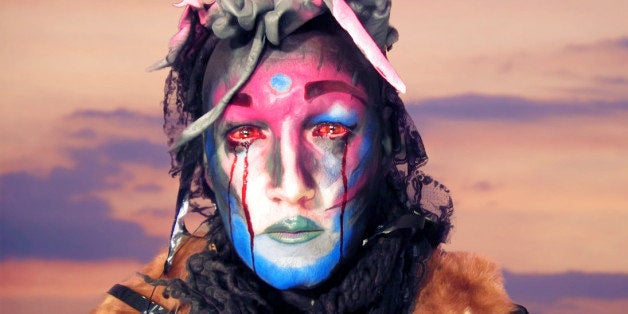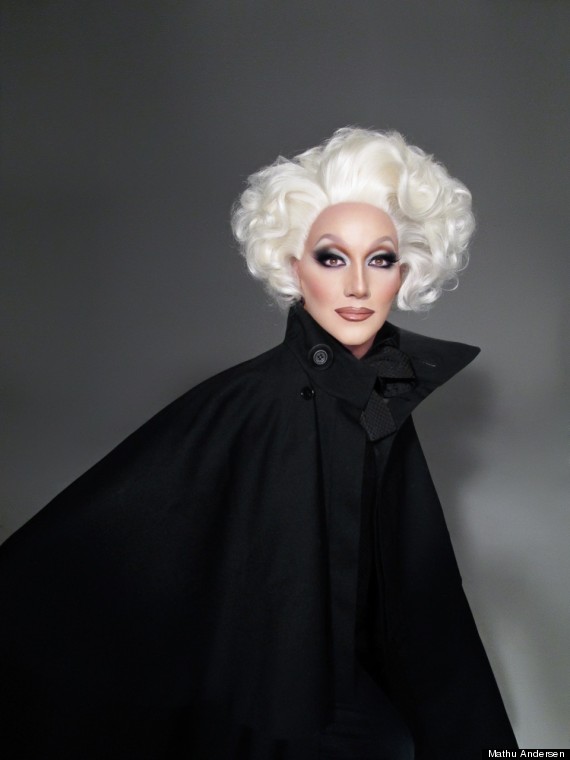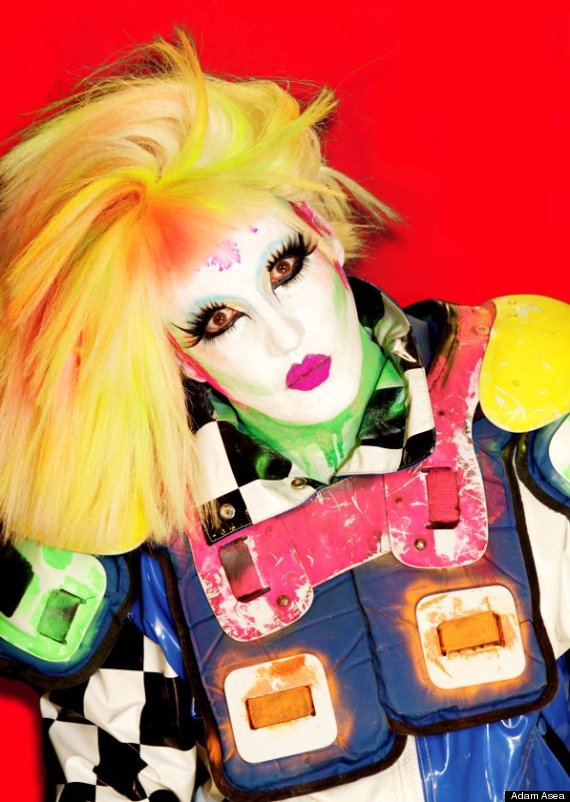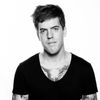
This is the eighteenth installment in HuffPost Gay Voices Associate Editor JamesMichael Nichols' 30-part series "After Dark: NYC Nightlife Today And Days Past" that examines the state of New York nightlife in the modern day, as well as the development and production of nightlife over the past several decades. Each featured individual in this series currently serves as a prominent person in the New York nightlife community or has made important contributions in the past that have sustained long-lasting impacts.
HuffPost Gay Voices believes that it is important and valuable to elevate the work, both today and in the past, of those engaged in the New York nightlife community, especially in an age where queer history seems to be increasingly forgotten. Nightlife not only creates spaces for queers and other marginalized groups to be artistically and authentically celebrated, but the work of those involved in nightlife creates and shapes the future of our culture as a whole. Visit Gay Voices regularly to learn not only about individuals currently making an impact in nightlife, but those whose legacy has previously contributed to the ways we understand queerness, art, identity and human experience today.
The Huffington Post: What did you journey to becoming an icon and original Club Kid within NYC nightlife entail?
James St. James: It was 30 years ago this month that I moved to New York. Thirty year ago. Dear God, I’m OLD. I remember it all like it was yesterday, though. The excess of the ‘80s. The debauchery of the ‘90s. The rise (and fall) of the Club Kid scene. The wigs, the platforms, the outrageous outfits. The good times -- and the bad.
I came to NYU to study experimental theater. Shortly thereafter I was featured in a Newsweek article about the emerging downtown club scene and, well, that was it for NYU. I was off and running. You have to remember that New York in the mid-'80s was ground zero for the AIDS epidemic. Fear and hysteria were what drove us. There was a prevailing sense that you and your friends might not be around this time next week -– so enjoy the now! Don’t think about tomorrow.
So we partied too hard, drank too much, laughed too loud. We danced on the lip of the volcano, so to speak. We were young, too. And New York was still a big, open city where anything could happen and anyone could be star. Rents were cheap, creativity was encouraged and bottle service was still 20 years away.
That was the era the Club Kids came into.
The Club Kids were about fun. Wild, messy fun -- the more debauched, the better. Michael Alig operated on the chaos principal: he thrived on confusion and mayhem. Looking back now, the first generation of Club Kids was a little rough -- mostly just kids in Halloween costumes. Sometimes the outfits were great, but the makeup was wrong. Or the hair and makeup were on point, but the outfit was a groaner.
It evolved quickly, though. With each progressive wave of kids, it became more streamlined. As the ‘80s segued into the ‘90s and we migrated from the Tunnel to Red Zone to Mars, everything got sleeker, harder and shinier. The innovations were self-referencing, and the looks built on themselves rather than culling from past scenes. That’s what I see now: the realization of what we were trying to do. When I look at kids like Ryan Burke or MILK or Kayvon Zand, I see the apex of Club Kid evolution.

In Michael Alig's feature he talked a lot about "subverting the establishment" and nightlife in political terms. Was nightlife and the Club Kids ever politically-charged for you?
I think we definitely broke barriers and subverted gender stereotypes. We created our own trends, tackled taboos and lampooned social protocol. Ultimately –- and I say this with a straight face -– I believe we had a destabilizing effect on pop culture as a whole. We influenced a whole generation of kids on shows like Geraldo, Phil Donahue and Ricki Lake, and set the stage for the decadent ‘90s (and beyond). Gaga, anyone?
What did the Club Kids as an institution mean to you? What did you see for this scene as a movement?
Institution? We were trying to tear down institutions, not become one. But I suppose it’s a bit like the adage: “Politicians, ugly buildings and prostitutes all become respectable with age.” You can throw "Club Kids" on that list now, too [laughs].
As for what it meant to us at the time: I think we really thought that we found a way to create our own utopia outside of society. We felt like we were living in a bubble where the rules of normal people didn’t apply to us. And it was fabulous... for awhile. Really, really fabulous. But as everyone from George Orwell to Joseph Conrad to William Golding will tell you, it’s ultimately a recipe for disaster (see: "Party Monster").
How would you describe yourself as artist and your identity within the context of New York nightlife?
What a question. That presumes I think of myself as an artist. I think too often, in your 20s, you run around screaming “I’m an AHHHRTIST! Look at my AHHHHHRT!” And you hold up a Playdoh diorama of monkeys hanging laundry and everybody claps and calls it “post-post-modern.” I think it’s up to posterity to decide if what you create is art, and if what you do has any lasting merit.
I think you just have to do what you do, do it the best you can and work your ass off doing it. If you do it long enough and live long enough, you’ll be labeled a legend or an institution then maaaaaaybe you can call yourself an artist with a straight face.
As for my identity within the context of New York nightlife? I left in the ‘90s, so I’m not part of the scene anymore. I’ll always be interested in what’s happening downtown, and I try and keep up with the changing faces on social media. But do I exist within its context? No.
What were the most formative experiences to you as an artist and nightlife personality during the Club Kids era?
Just being around vibrant, creative, intelligent people is the best formative experience you can have when you are young.
I’ve been lucky to have had some amazing mentors over the years who helped guide me and shape me: Michael Musto, Stephen Saban, Michelangelo Signorile, Gabriel Rotello, Randy Barbato and Fenton Bailey, to start with. And I’ve been inspired by so many club personalities I couldn’t BEGIN to list them all, but certainly Kabuki, Mathu Anderson, Zaldy, Amanda Lepore, Sister Dimension, Kenny Kenny, Susanne Bartsch, Leigh Bowery, Billy Beyond, Dianne Brill, John Sex, Larry Tee, Lahoma, Waltpaper, Cody Ravioli, and Richie Rich are at the top of the list.
I want to read you a quote from Walt Cassidy’s "After Dark" feature: “The nightlife experience today is no longer linear. It is broken up into two parts. The participation, which largely consists of documenting the experience, followed by the process of offloading it into cyber space and having a secondary experience online.” Do you agree with this? How do you feel like technology and the Internet have augmented nightlife in the modern day?
On the one hand yes, nightlife has changed and everybody is so concerned with documenting their experiences that they aren’t actually enjoying their experiences and everybody needs to put down the phones and just live... blah blah blah.
On the other hand, what an amazing time to be alive. And how interesting is this 21st century? The world has made a radical shift, and suddenly there are so many new possibilities. By all means, document every second of it. You won’t regret having those pics in 20 years.
I speak from experience. There aren’t a lot of pictures of me in the ‘90s. I had, um, a bit of a drug problem and tended to run away from the camera. It’s sad now when I see old pics of Club Kids, and I’m not there because I was just out of frame, lying in a puddle of vomit or shivering in a bathroom stall. So go ahead and take those pictures at the club. Post them on Instagram. Text your friends while standing on the dancefloor. Check your Facebook and Grindr every three minutes. That is how we experience life today -- so be a part of it.
How do you see what happened during your time in NYC nightlife influencing nightlife today? How has nightlife changed?
I think the Club Kids were precursors to today’s reality stars. By being “famous for nothing” we became famous for something, and that’s certainly a very modern concept.
I think we had a part in helping Warhol’s famous dictum “In the future everyone will be famous for 15 minutes” come to pass. I think we laid the groundwork, and then with the limitless self-promotional possibilities of today’s technology, it absolutely is a thing now. Vine stars, Instagram stars -– they all owe us royalties [laughs]. And nightlife has changed enormously, of course. But then, so have I. I’ve grown (I hope), and what I want out of my nightlife experience has changed. I’m a casual visitor now, so it’s always fun and it’s always surprising.

In reference to the queer community, Kenny Kenny said in this feature: "We are the shamans of society. We’re here to show them you don’t have to go by the conditioned way of living. We’re here to show them you can live your life in a very authentic way. That’s what I think gay people are here for. And of course, to enjoy sex as well. Why not?" -- In this age of gay marriage, do you see the role of queer people as being "shamans" in society in this same way? How can those involved in nightlife act as a preservation of the more radical, creative and transgressive components of the queer community?
Well, there will always be radical, creative and trangressive kids who want to shake up the establishment. And young people will always buck against the generation that came before them. So I don’t think we have to worry TOO much. I’m a bit of an optimist in that respect.
Yes, we homos seem to be normalizing a bit, and folding into polite society, and it’s all a bit of a bore. But mostly that’s the old folks who have fought long and hard their whole lives to be accepted and just want to enjoy the fruits of their labor now. But you can’t tell me that teenagers are really buying into the whole bourgeois fantasy that "Modern Family" is selling. And trust me, no 17-year-old is excited about “normcore” fashion. I refuse to believe it.
I think part of being gay is having that "spidey sense" for what’s new and what’s different. I think we will always push boundaries -- maybe now it’s just from within the establishment. And that’s a good thing.
What projects are you currently working on?
Well, I blog for the WOW Report, so you can always find me there. And I have my YouTube series “Transformations” on WOWpresents. Every week I have a different drag queen, makeup artist, performance artist, or club freak give me an extreme makeover. It’s my way of playing dress-up with my club friends without really having to go out. Because I’M OLD [laughs].
I’m also currently working on a book about my Transformation experiences called “Welcome to My Face” –- sort of a guide to life, illustrated with the images from the show.
If there was something you wished to communicate about the evolution of queer history through nightlife in New York to the new generation, what do you think is the most important thing to ensure is not forgotten?
Know your history. Know your icons. Yes, the "Drag Race" girls are all majorly important, but learn about the trailblazers who paved the way for them (and you). The Holly Woodlawns, the Jayne Countys, the Teri Toyes. Give them the homage they deserve. And know that no matter how creative you think you’re being, somebody else usually did it first. And that somebody was usually Leigh Bowery or Rudi Gernreich [laughs].
But whether it was the Club Kids, the New Romantics, the Mudd Club kids, the punks, the Factory crowd, the Dadaists, the Surrealists, the Bright Young Things, or the Macaronis, know that you are standing on the shoulders of giants.
And once you know your history, you can go out and create your own.
Missed the previous installments in this series? Check out the slideshow below.

